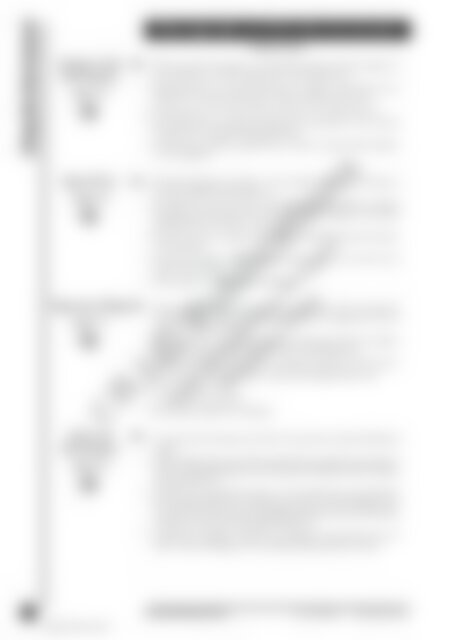RIC-0667 Aboriginal Cult 5-6
You also want an ePaper? Increase the reach of your titles
YUMPU automatically turns print PDFs into web optimized ePapers that Google loves.
Using the Environment<br />
Changes in the<br />
Environment<br />
(page 75)<br />
Special Trees<br />
(page 76)<br />
Important Things<br />
(page 77)<br />
Colour the<br />
Environment<br />
(page 78)<br />
<strong>Aboriginal</strong>s and the Environment<br />
Teachers Notes<br />
• Write the word ‘environment’ on a large sheet of paper. Ask the students to<br />
give a definition. List their suggestions on the paper. Discuss.<br />
• Display pictures of a natural environment to students. Ask ‘How do you<br />
know this is a natural environment?’ Accept and discuss all answers.<br />
• Display pictures of a built/created environment and compare the two.<br />
• Read information to students, focusing on the importance of the natural<br />
environment to traditional <strong>Aboriginal</strong> people.<br />
• Complete the worksheet and glue them in order on a separate sheet of paper<br />
or in a scrapbook.<br />
• Read the information on page 72 to the students. Discuss it, focusing on<br />
how the <strong>Aboriginal</strong> people used trees.<br />
• Ask ‘What do we use trees for?’ Accept all answers and explain to students<br />
that paper comes from trees. You may wish to draw a diagram on the board<br />
explaining the process from a tree to paper.<br />
• If you have access to a paper recycling kit, you could demonstrate how paper<br />
can be recycled.<br />
• Ask selected students what <strong>Aboriginal</strong> people used trees for and write all<br />
answers on the board.<br />
• Allow students to complete the worksheet.<br />
• Inform students of the importance of natural products in the environment<br />
to traditional <strong>Aboriginal</strong> people and why they were important. (Use the<br />
information sheet provided.)<br />
• Talk about how we use resources from the environment today; for example,<br />
trees give us paper and rain provides us with our drinking water.<br />
• Using students’ input, make a list on a large sheet of paper or the board of:<br />
(a) what environmental resources traditional <strong>Aboriginal</strong> people used<br />
(b) how they were used<br />
(c) what they were used for.<br />
• Discuss and complete the worksheet.<br />
©R.I.C. Publications<br />
Low Resolution Images<br />
Display Copy<br />
• As a class, discuss the importance of the environment for traditional <strong>Aboriginal</strong><br />
people.<br />
• Tell the students about some of the changes that were made to the environment<br />
when non-<strong>Aboriginal</strong> people arrived in Australia (clearing the land for farming,<br />
fencing off land etc.).<br />
• Ask ‘How do you think the changes to the environment may have affected<br />
the <strong>Aboriginal</strong> people?’ Encourage students to focus on food availability. (The<br />
trees that were cut down by non-<strong>Aboriginal</strong> people may have had animals<br />
and birds in them that the <strong>Aboriginal</strong> people ate.)<br />
• Complete the worksheet. (Students cut and glue the environmental scene in<br />
order—what could happen to a tree before, during and after a storm.)<br />
74 Australian <strong>Aboriginal</strong> <strong>Cult</strong>ure R.I.C. Publications www.ricgroup.com.au<br />
ISBN 978-1-86311-807-1


















